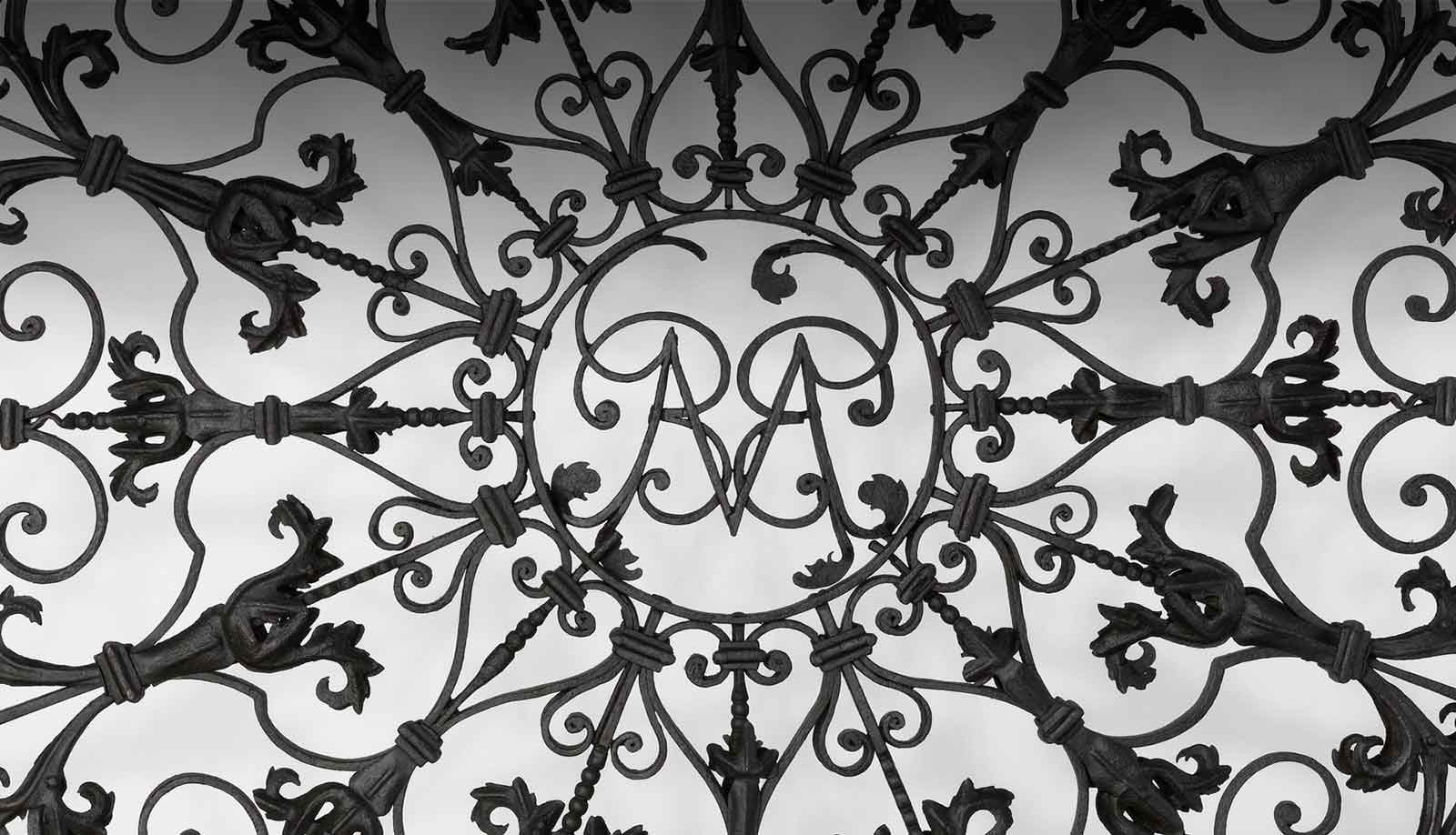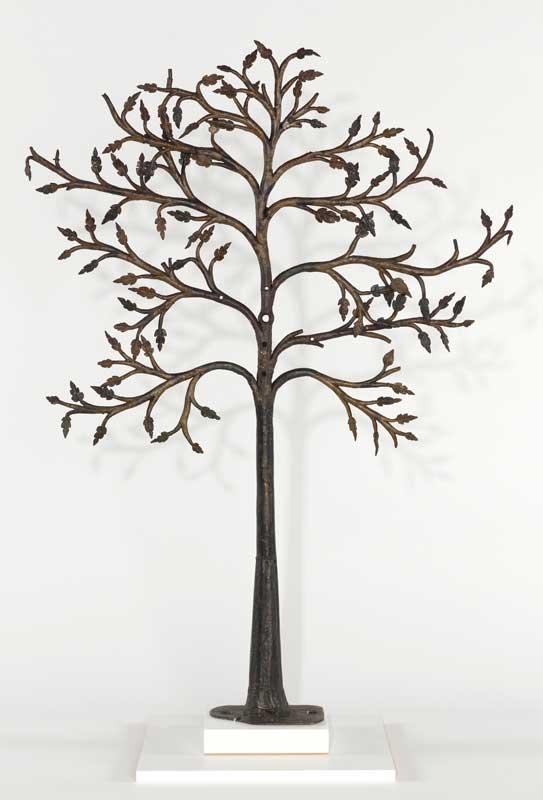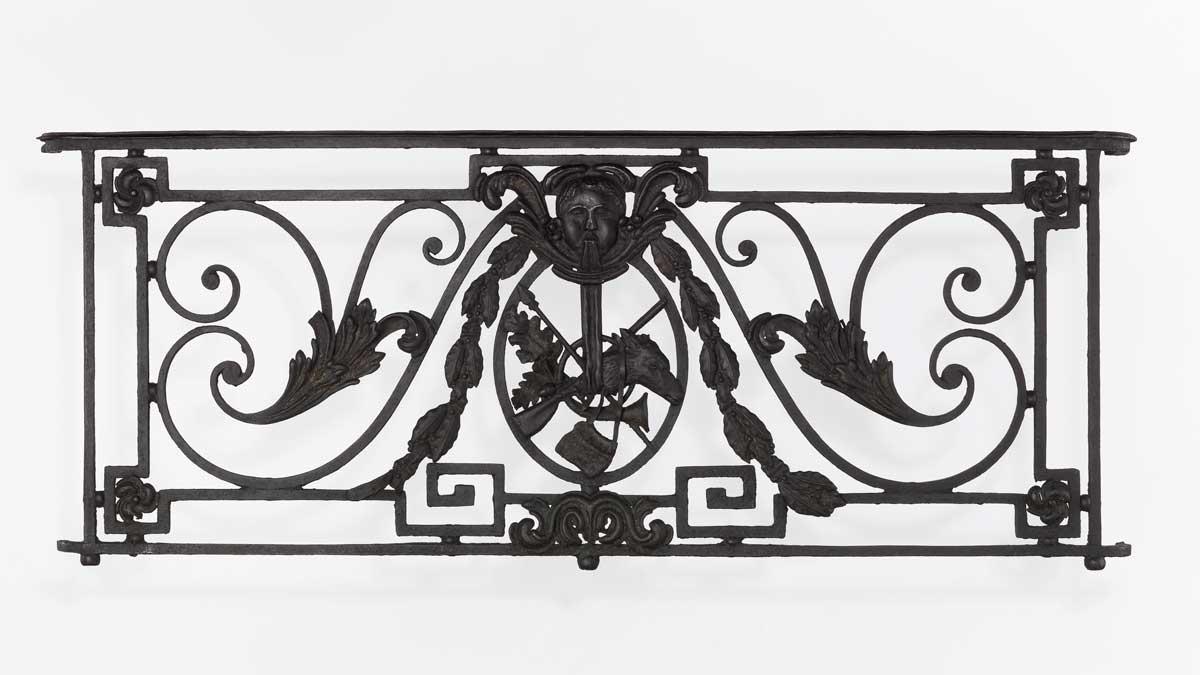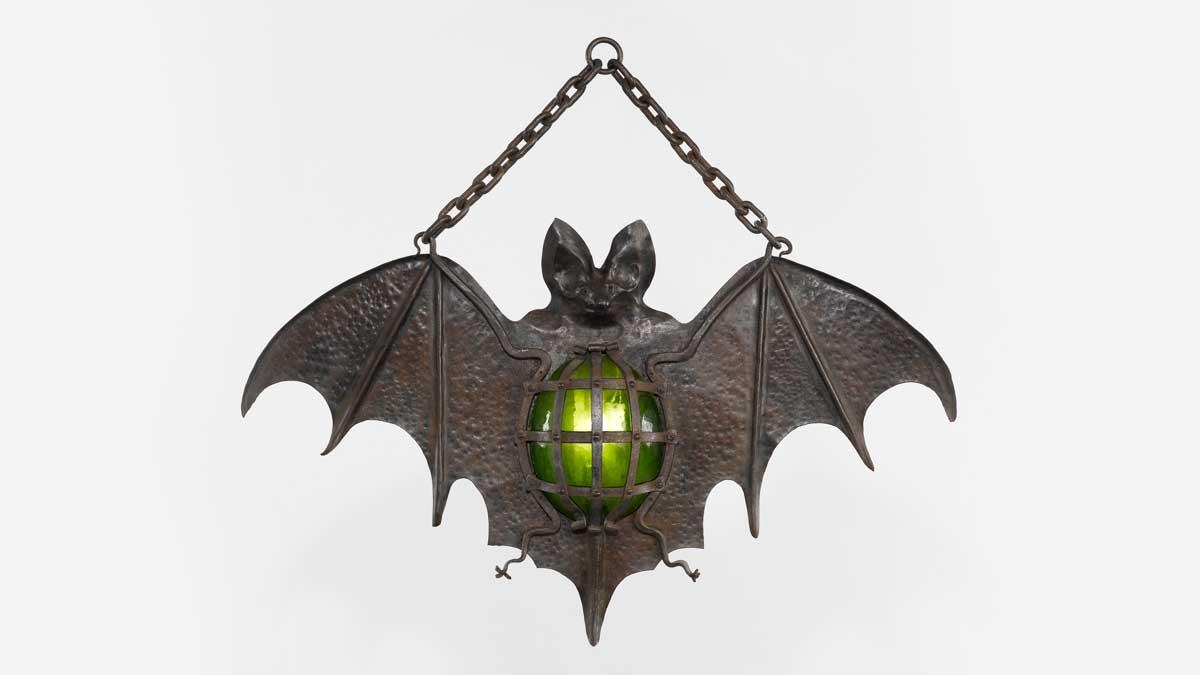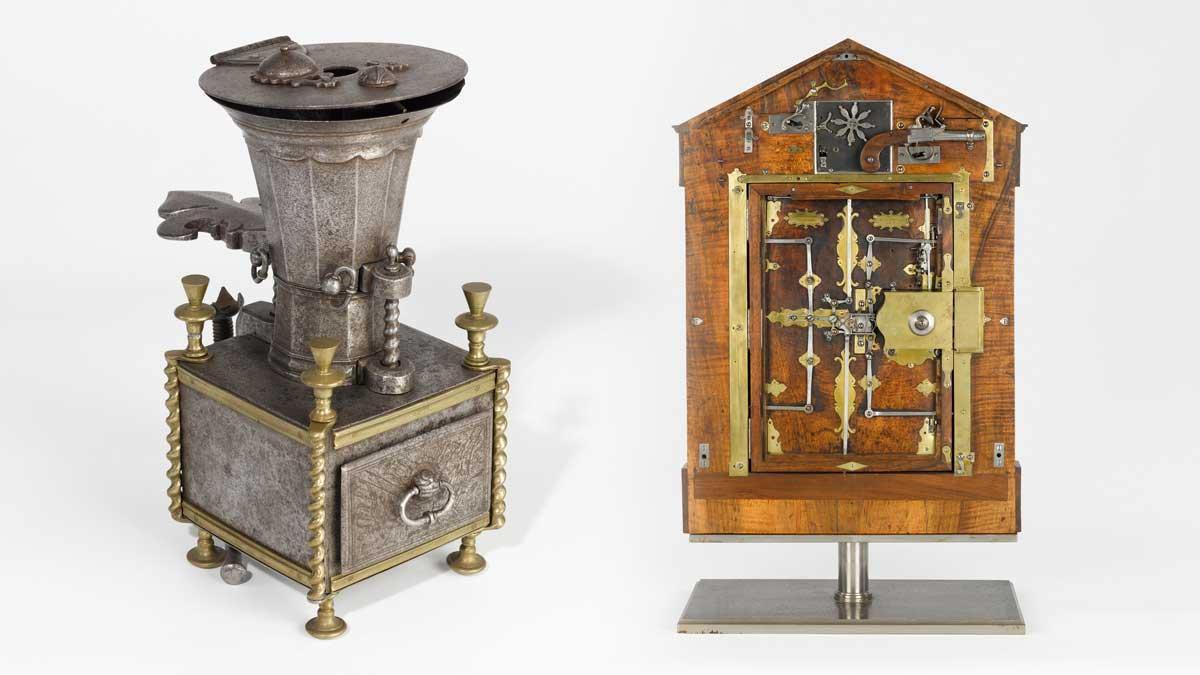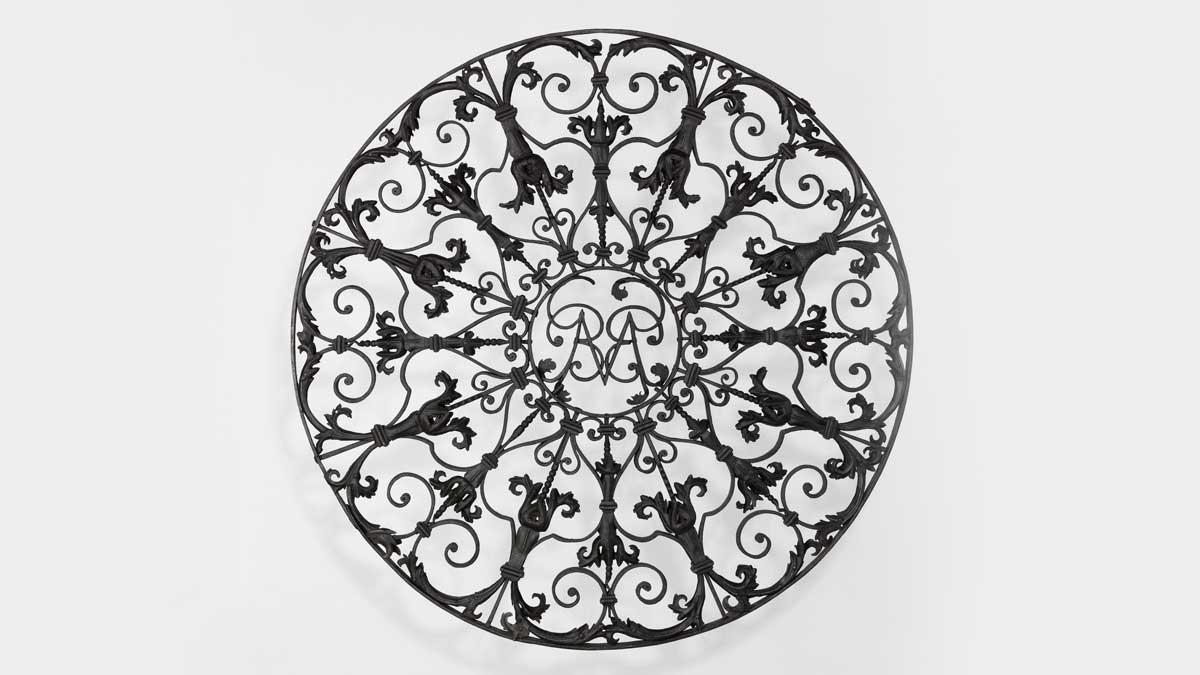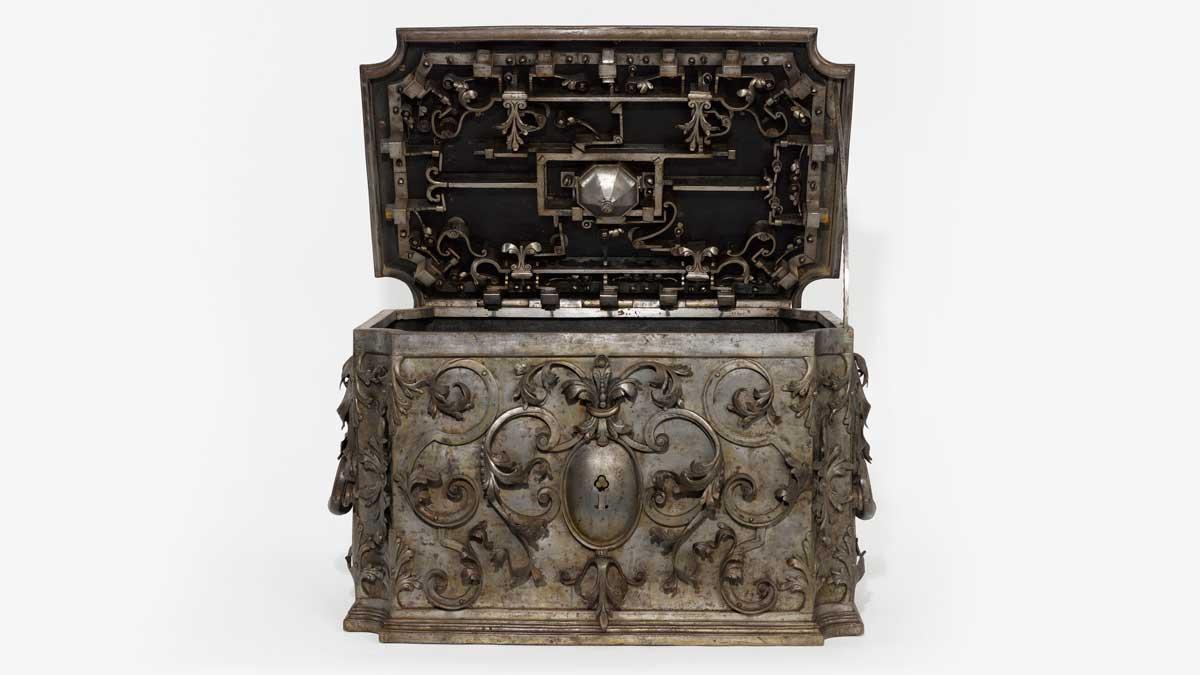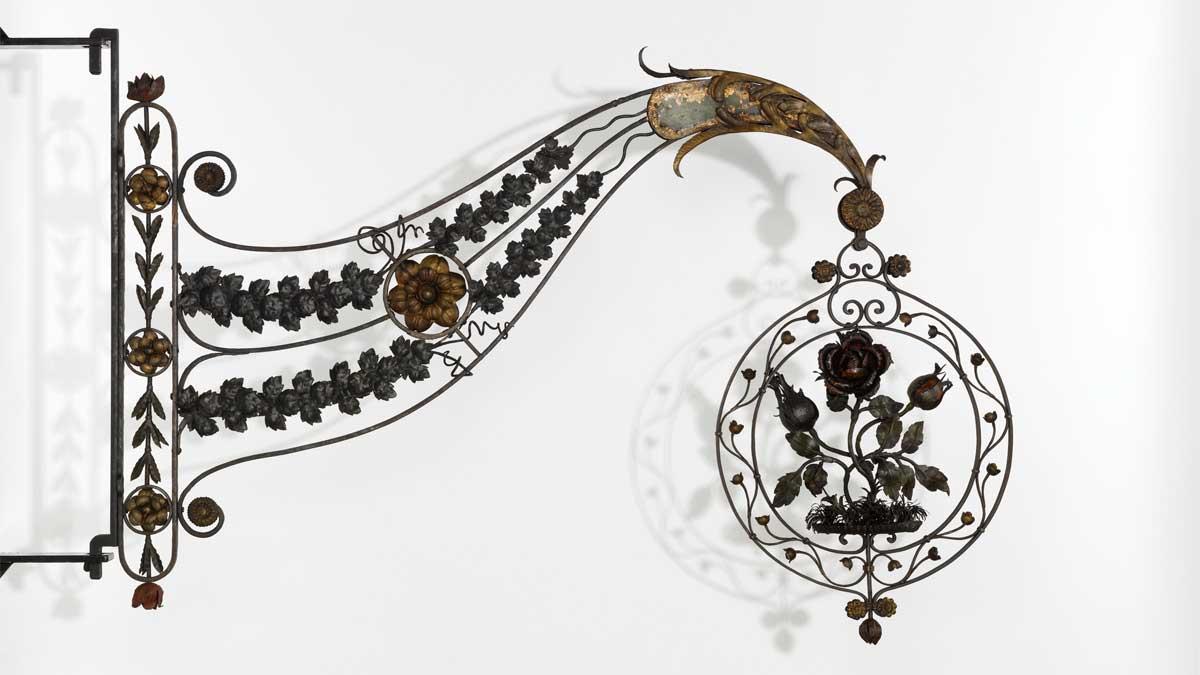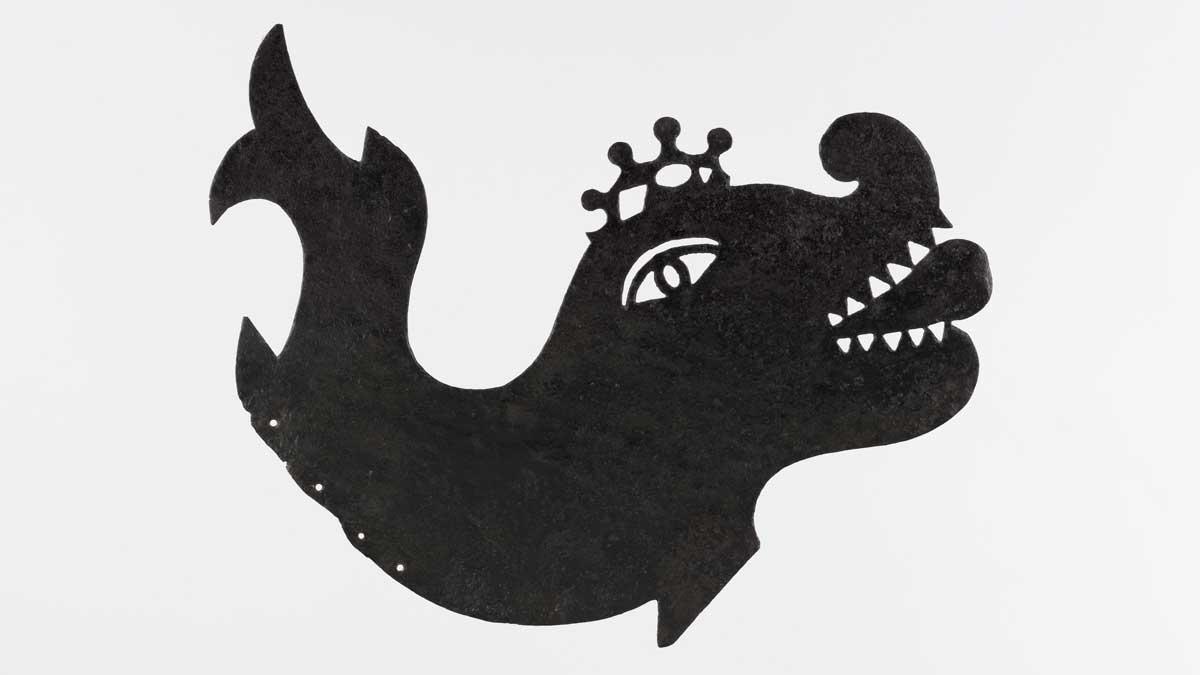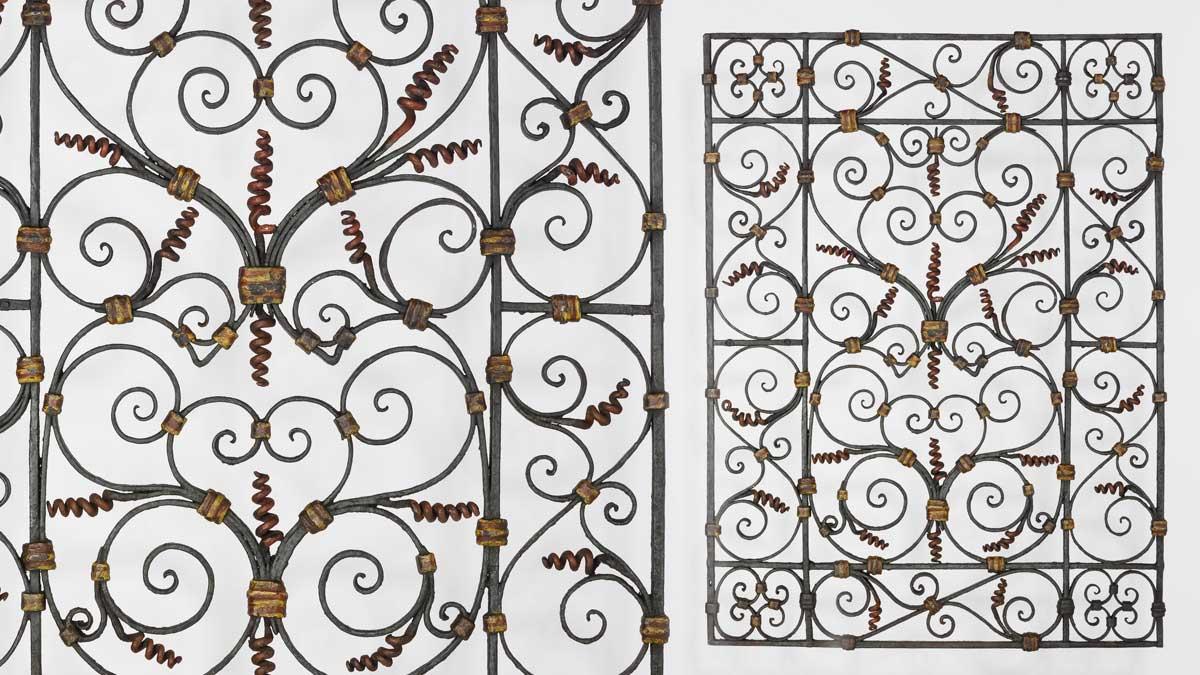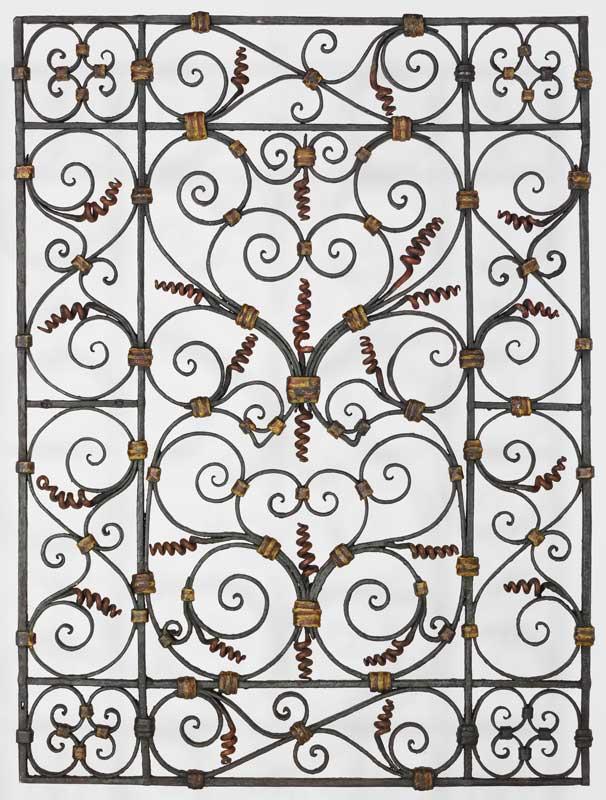For centuries wrought iron was everywhere in Europe, forged by hand into hanging signs, church lecterns, locks, kitchenware, and architectural features. Then in the 19th century, it started to disappear. Materials like steel and glass became more fashionable, while radical urban renewal projects leveled old structures. Their ironwork ornamentation was often melted down for reuse, or thrown in the trash. Jean-Louis-Henri Le Secq Destournelles, a painter and photographer, noticed the vanishing of this artistic heritage in Paris. Between 1853 and 1870, many of its historic streets were destroyed under the plan of Baron Georges-Eugène Haussmann, replacing them with broad avenues lined with uniform architecture.
Le Secq salvaged ironwork from these Parisian ruins, and from those scraps his collection grew. Now the Musée Le Secq des Tournelles in Rouen is among the world’s leading museums of antique ironwork. “This material used to be ubiquitous, but it seems to have fallen out of our visual vocabulary, even though wrought iron still appears in many places, from balcony railings on old buildings to ornaments in old cemeteries,” said Kathleen M. Morris, the Sylvia and Leonard Marx director of collections and exhibitions and curator of decorative arts at the Clark Art Institute.
The Art of Iron at the Clark Art Institute in Williamstown, Massachusetts displayed thirty-six objects from the Musée Le Secq des Tournelles in 2018. The two museums are part of the French American Museum Exchange (FRAME), which supports partnerships between institutions on both sides of the Atlantic. "It's only the second time that a major exhibition of the treasures at the Musée Le Secq des Tournelles has been organized abroad," said Alexandra Bosc, curator of decorative arts at the Rouen museum. The Art of Iron follows the 2015-16 Strength and Splendor: Wrought Iron from the Musée le Secq des Tournelles, Rouen at the Barnes Foundation in Philadelphia.
The pieces at the Clark ranged from menacingly spiked 18th-century dog collars to a 17th-century snake-shaped water spout. “I tried to select objects of great quality, as well as diversity, both of which are indications of the character of the holdings of that museum,” said Morris. Whether a blooming metal rose on an 18th-century florist’s sign, or an inventive 1823 safe door outfitted with an alarm pistol that fired when the lock was tampered with, they reflect how ironsmiths worked hot metal for a diversity of purposes. Architectural grilles, like an elegant 1700 circular example from Amiens that may reference the rose windows of the city’s cathedral, demonstrate wrought iron’s use in allowing air and light circulation in buildings before glass windows. A hefty 17th-century cooking pot on an hook, elegantly tooled with patterns, recalls the material’s role in the home when most meals were made over open fires.
“Some of the forms are instantly recognizable in terms of function, such as a wrought-iron gate,” Morris stated. “Others are more mysterious, such as a bear muzzle, or a 17th-century depiction of a tree in wrought iron. I love that they all tell a story—some of them more apparent than others.” The signs in particular were made to pictorially communicate an establishment’s purpose, essential before widespread literacy and the 18th-century introduction of address numbers. For instance, a cabaret’s bat-shaped sign told passersby that this was a place to enter after dark.




